Football in a Combat Zone: WWII’s “Spaghetti Bowl”
January 1st, 2024
7 minute read
Americans love football. In fact, they love the gridiron game so much, they’re even ready to play (and watch) football in a combat zone. On January 1, 1945, American troops based in Italy did just that.
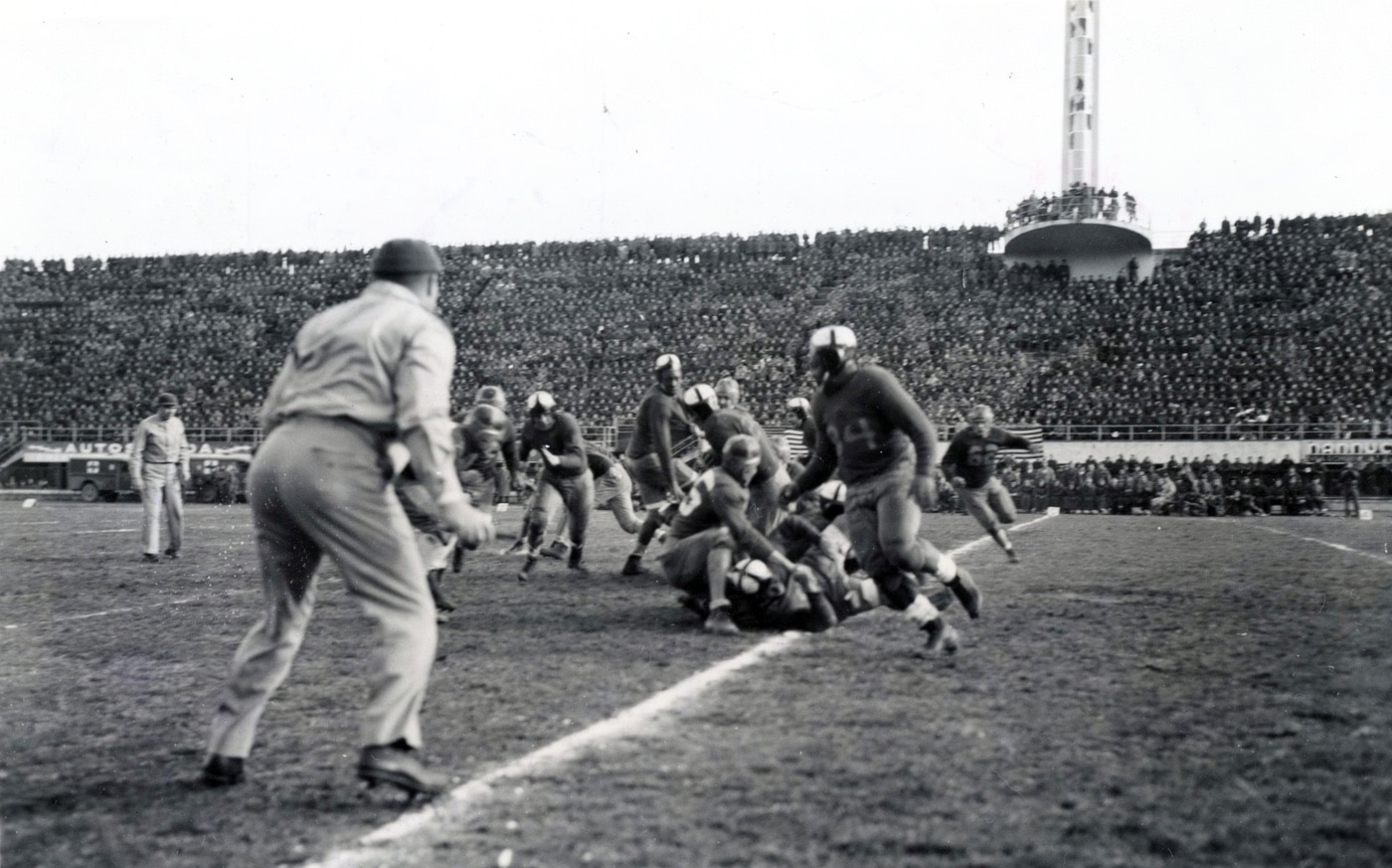
Now, this isn’t the story of some pick-up game played by a group of G.I.s during a brief respite in a rest camp or in some secluded area near the front. This is the story of the Spaghetti Bowl, a full-on, full-contact, football extravaganza with all the ceremony and celebration found with any major bowl game played on New Year’s Day.
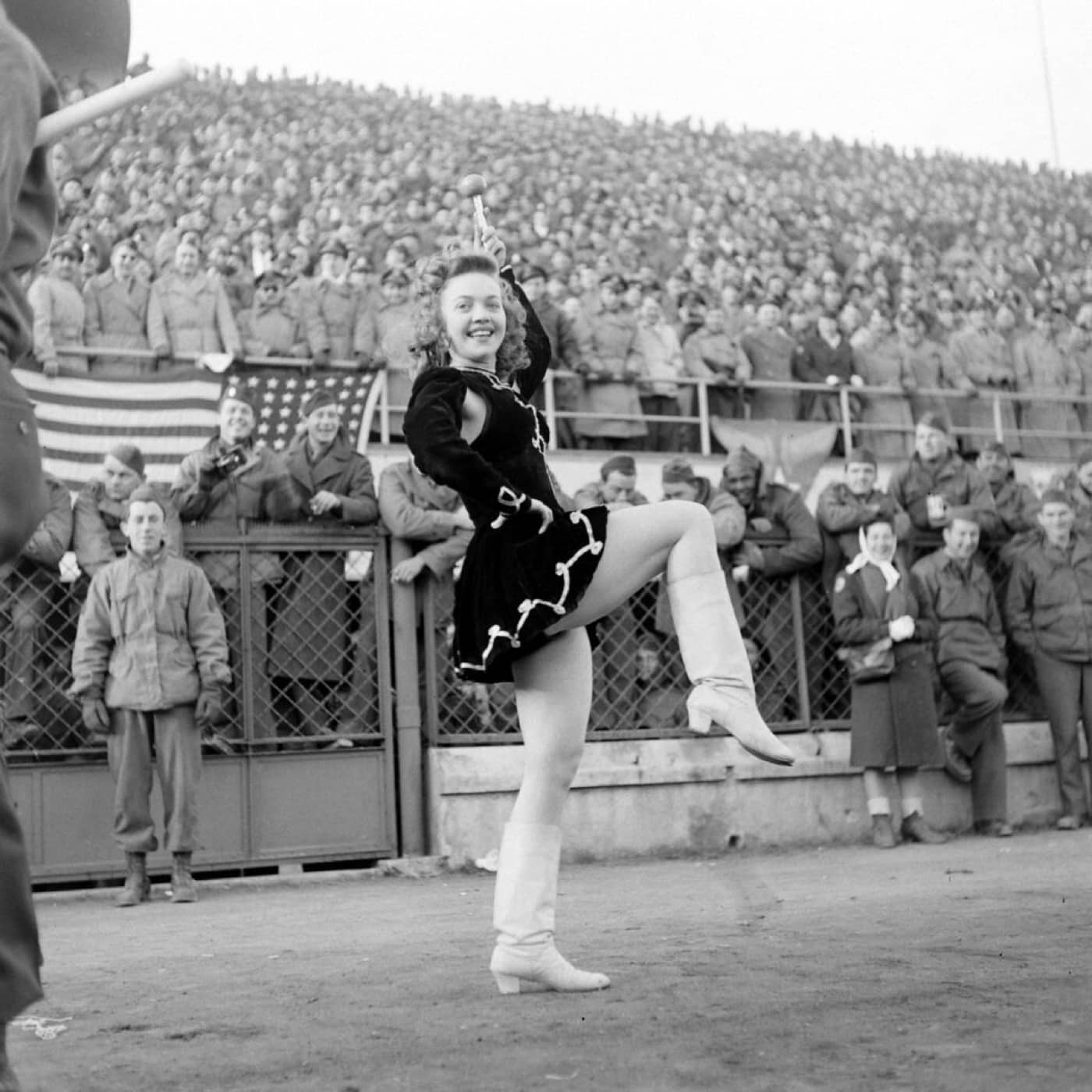
The U.S. Army announced it and promoted it. Then, the German Luftwaffe heard about it, and threatened to find the stadium and bomb it. Teams from the US 5th Army and the US 12th Air Force played it. And by the time it was done, more than 25,000 officers and men enjoyed every block-and-tackle minute of it.
Really Away Games
As far back as 1918, football travelled with American troops when they deployed to Europe. As the ranks of the American Expeditionary Force (AEF) began to swell during the summer of 1918, football teams started to form at American bases in Western France. By the fall of that year, American football was played in front of sizeable crowds of enthusiastic Doughboys, dismayed French and British allies, and some confused German prisoners.
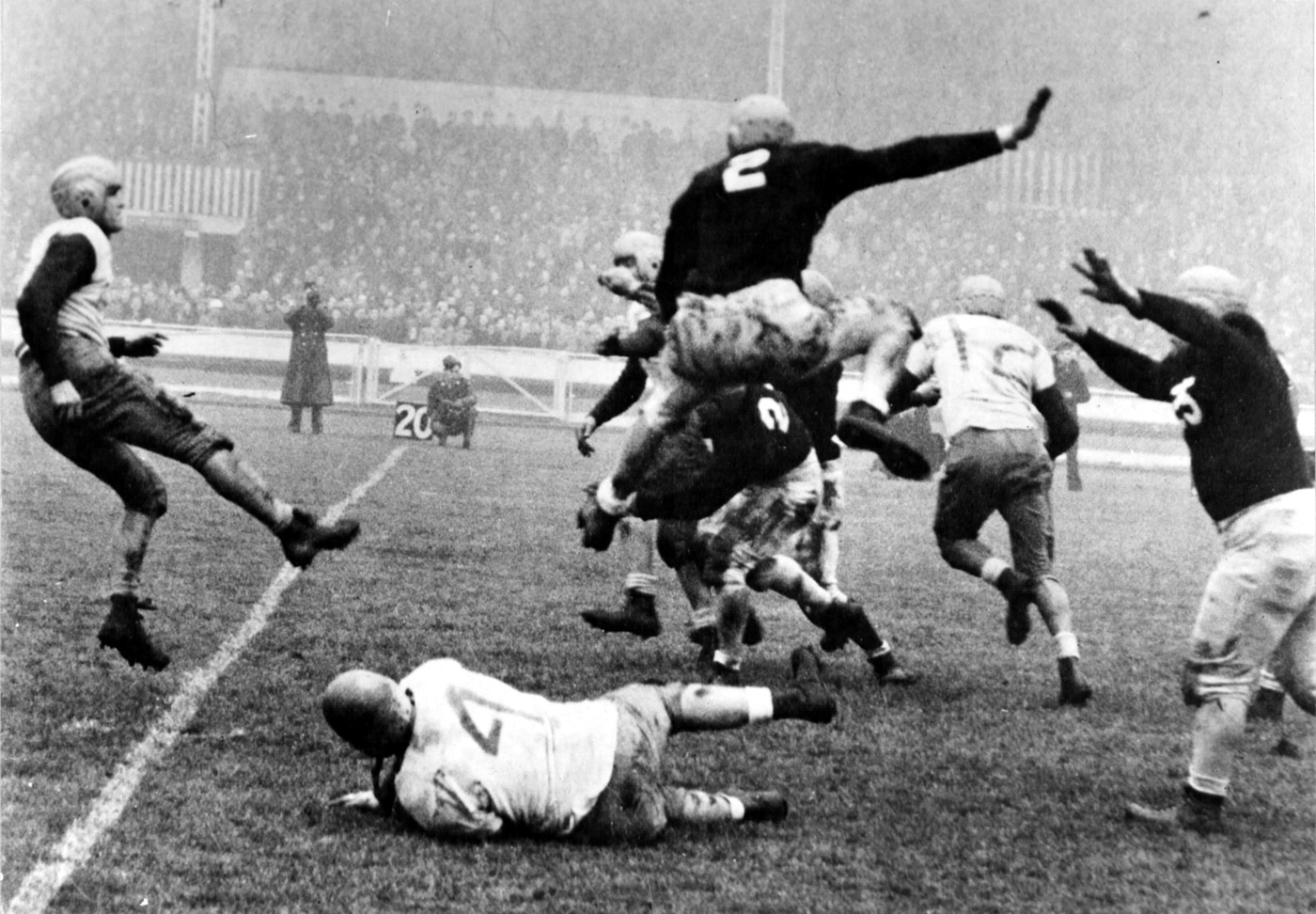
After the Armistice in November, American units began to move into Germany for duty with the Army of Occupation. By late January 1919, U.S. troops were playing football in divisional grudge matches in several locations in Western Germany. Photos show the teams equipped with proper uniforms, including leather helmets and pads of the era.
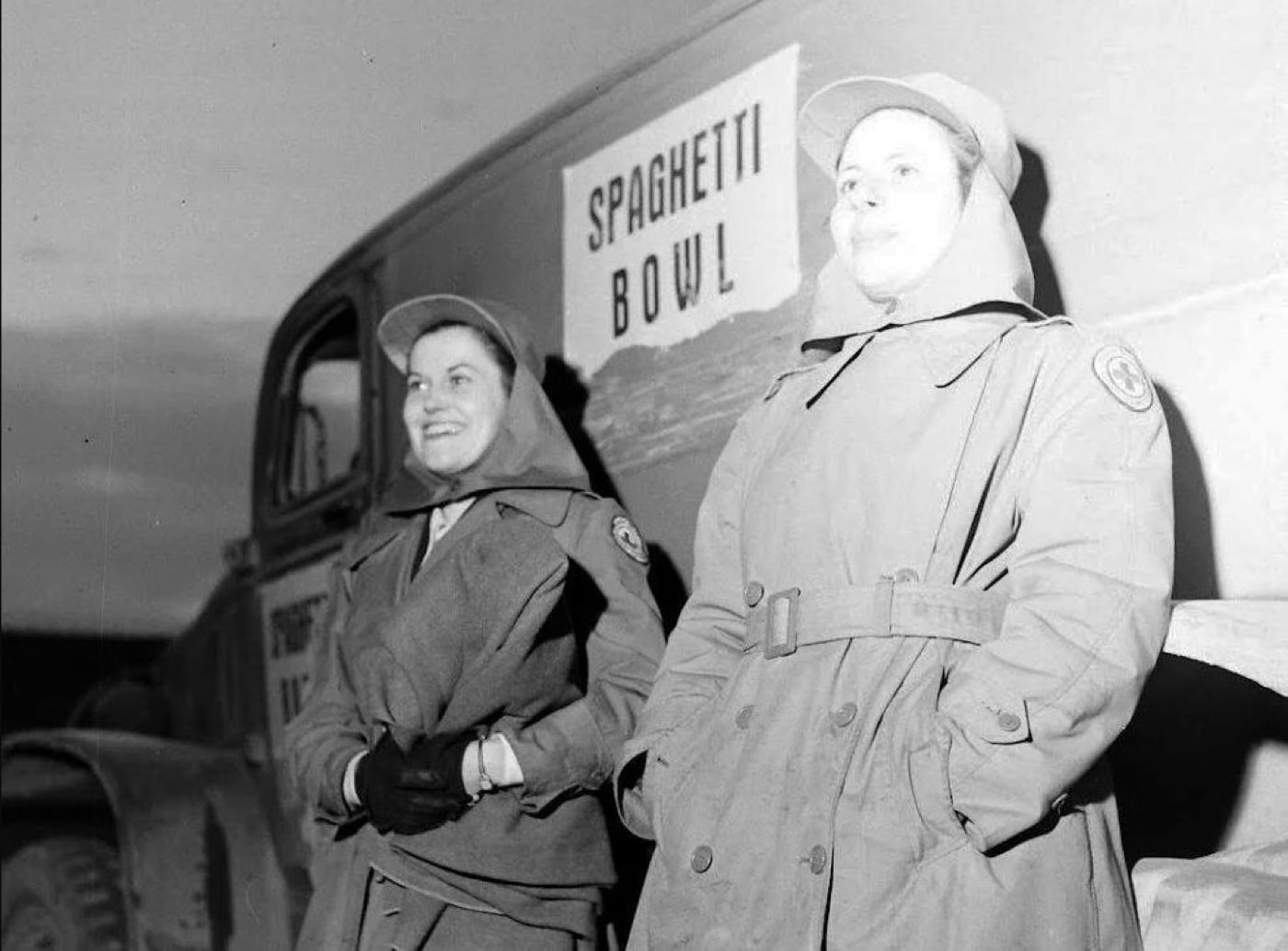
In those days, before the birth of National Football League, the jerseys were without numbers — and helmets were optional. Even so, goal posts were erected, fields marked with chalk, and gentlemen officers enlisted as referees. In one game near Coblenz in early 1919, a Signal Corps observation balloon was anchored near the corner of the field and a camera crew filmed parts of the game from on high. In another game, a balloon featured in the halftime entertainment as a daredevil U.S. Air Service officer jumped out, landing safely on the field by using an early parachute.
Including several aspects of the game we take for granted now, American football kicked off in Germany in the winter of 1919 — long before the first NFL regular-season game in Germany (November 13, 2022, as the Tampa Bay Buccaneers beat the Seattle Seahawks 21-16). American troops even took a football with them to Northern Russia during their intervention there in 1918-1919. Hazy photos show the boys blocking and tackling in the receding snow near Archangel in the spring of 1919.
By the time the United States entered World War II, football had grown into an American institution. The college game was dominant, but pro football was advancing as the NFL picked up steam. Football was quickly becoming America’s favorite pastime.
Once America joined the war and the draft was fully enabled, the U.S. military was populated with athletes — high school, college, and professional football players traded their leather helmets and jerseys for steel pots and fatigues, and their cleats for Army boots. But it wasn’t long before American football games broke out in some of the most unusual places. The Marines played football in Australia. The U.S. Army Air Forces played ball in China. The Army and Navy fielded teams in England, North Africa, India, Italy, and by the fall of 1944 Americans were playing football in France.
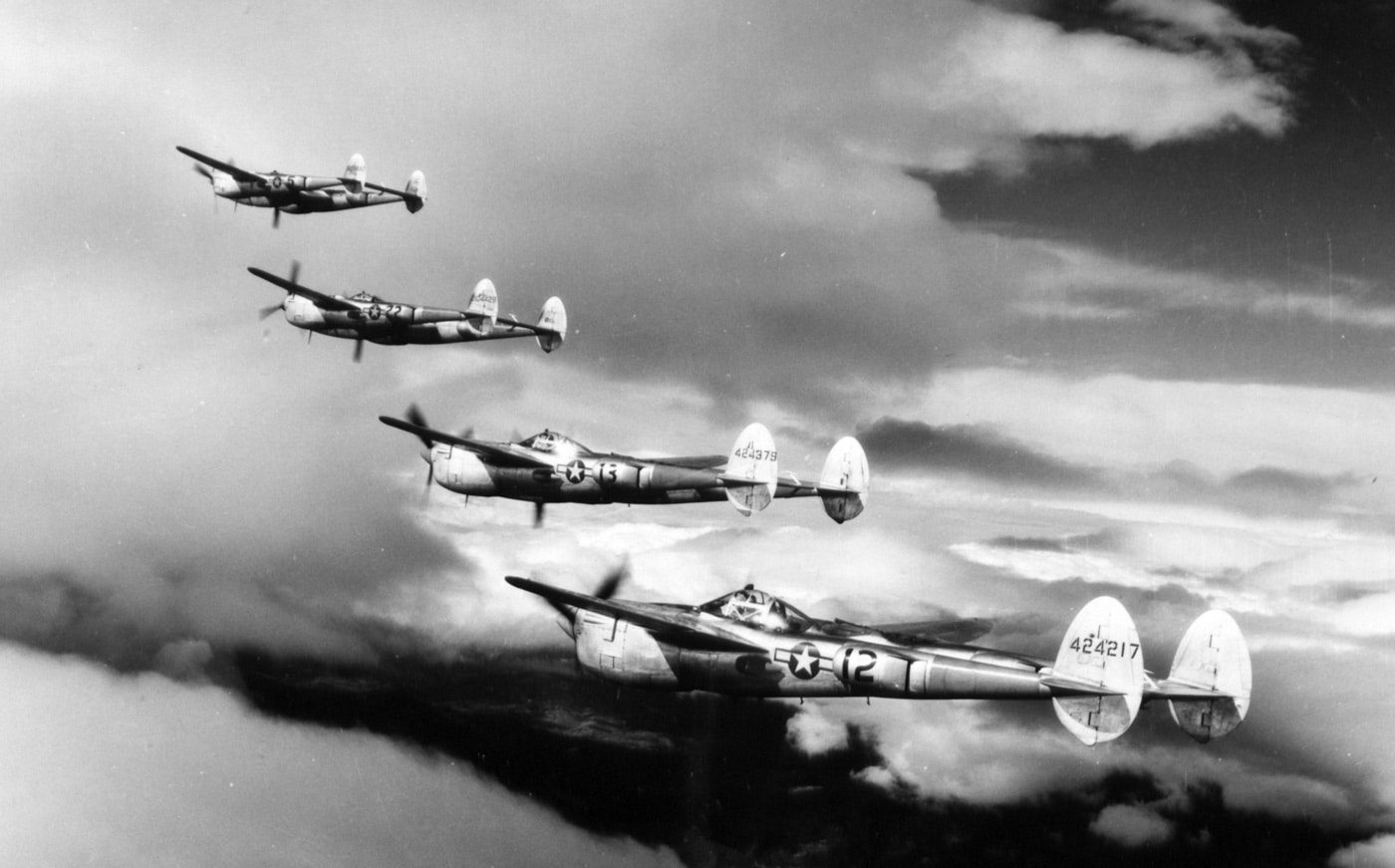
The large concentration of American troops in England and Ireland before the invasion of Normandy led to multiple teams and several knock-down, drag-out grudge matches. In November 1944 an Army versus Navy matchup (featuring a wide range of former college players) was played for the “European Championship” (called the “GI Bowl”) drew nearly 50,000 fans to a London stadium. Army won that game, but big-time football was just getting started in the ETO.
The Spaghetti Bowl
As the calendar changed to 1945, the war still raged in Europe. By January 1st, even as American forces were steadily pushing back the German counter-offensive in the Ardennes forest, the war was far from won. In Italy, the fighting was a slow, bloody slog in the mountains. Germany still needed to be beaten on multiple fronts, and it would take a maximum effort in the New Year. Keeping up morale was critical. American commanders in the MTO planned a football event to equal the annual New Year’s Day bowl games played stateside. The result was the iconic Spaghetti Bowl.
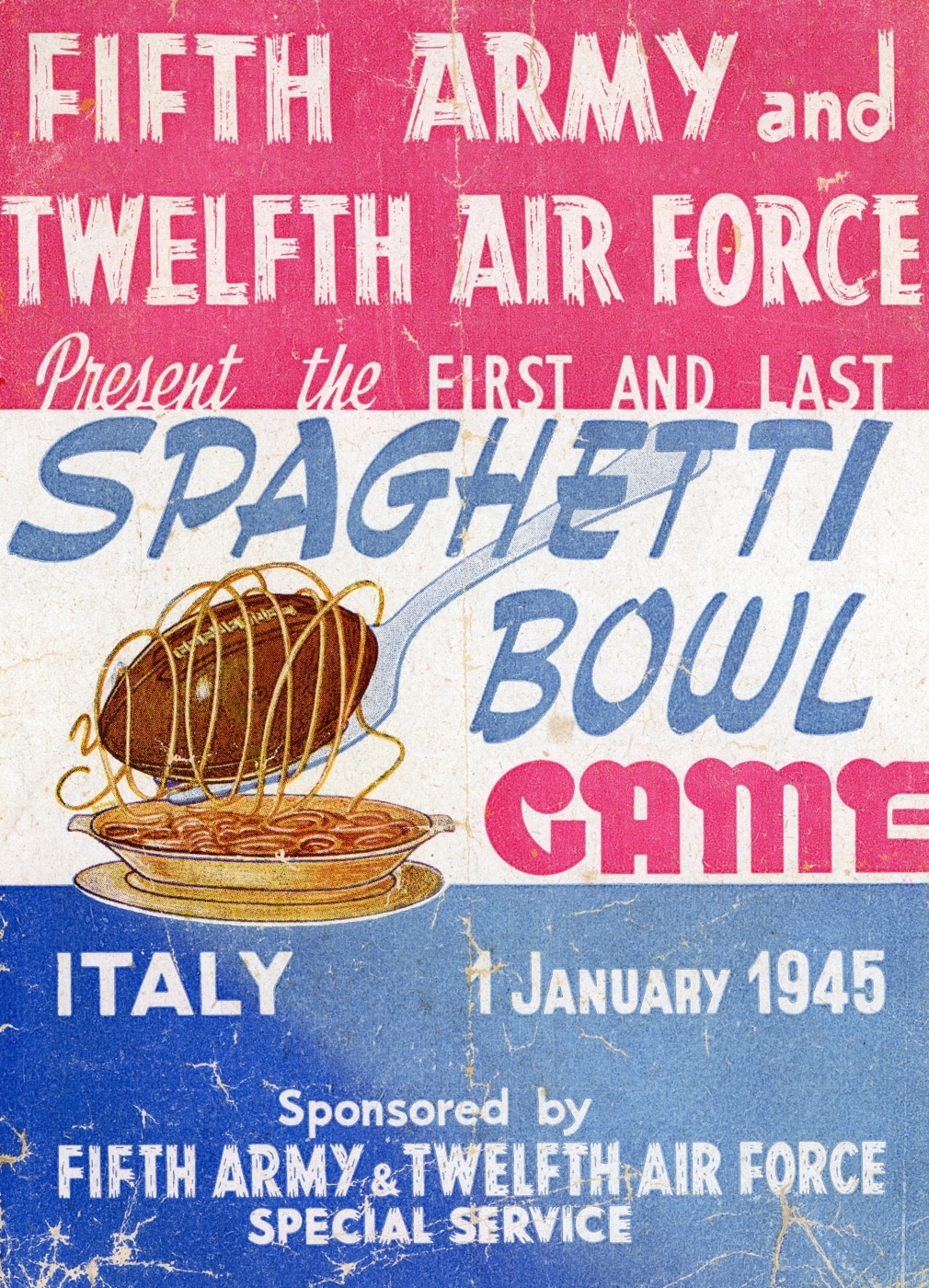
Despite maintaining the game’s specific location as a military secret, the event was still promoted, and G.I. fans were recruited and given brief leave to Florence to attend. Media reports noted that a German broadcast said the Luftwaffe called it “a great opportunity to bomb Florence”. P-38 Lightning fighters patrolled the skies overhead, in case the German air force decided to drop by. In the end, no Nazi aircraft made it to Florence for the game.
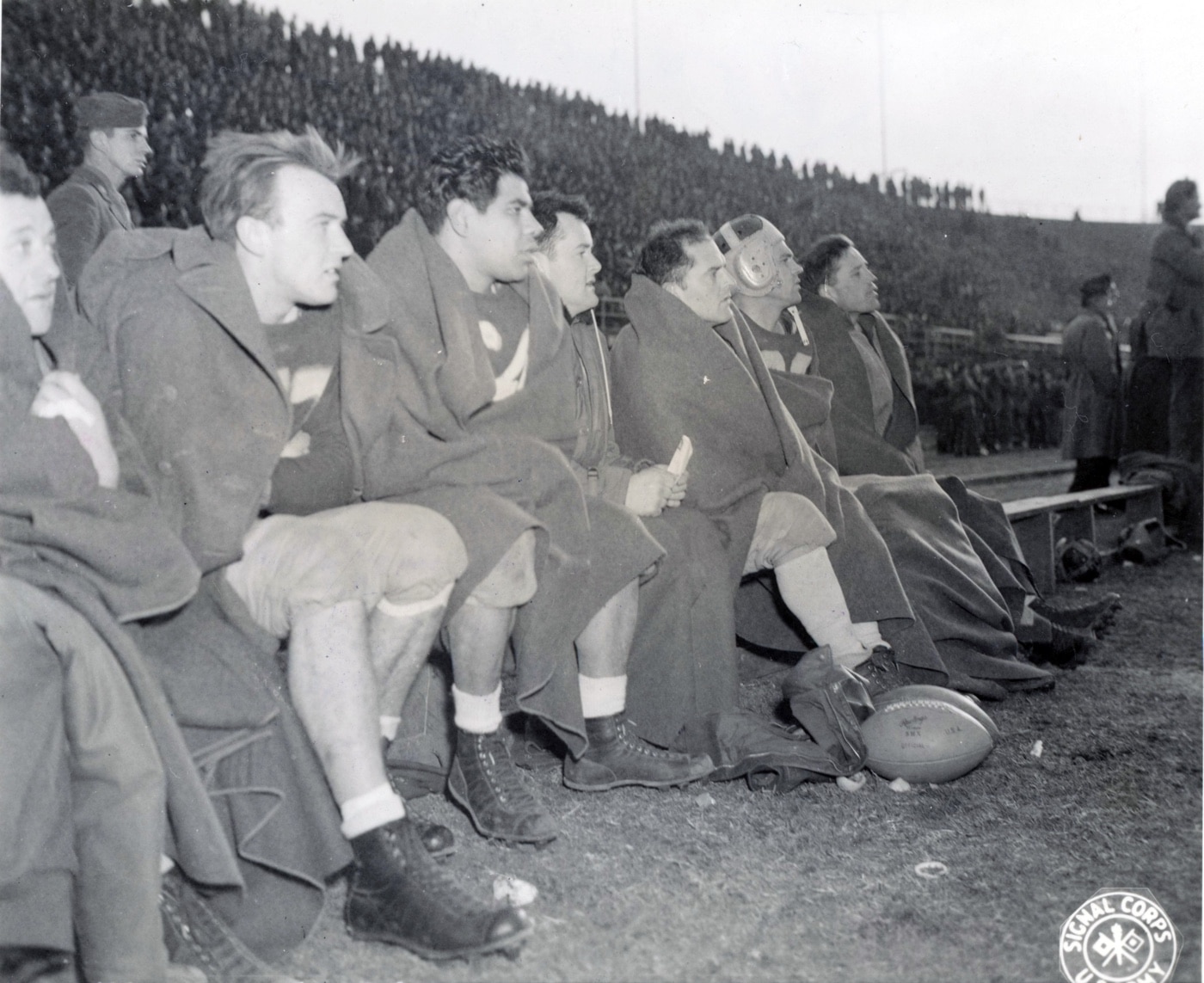
The AP’s Sid Feder wrote before the game, in a syndicated column coming from “Spaghetti Bowl Headquarters, Italy”:
“In a modern stadium that would make a lot of graduate managers back home green with envy, the Fifth Army “Krautclouters” and the 12th Air Force “Bridgebusters” today tangle in what is billed as the “first and last” Spaghetti Bowl game. The name of this town, where between 25,000 and 35,000 assorted soldiers and WACs are going to hold down benches is “unmentionable”, because Jerry hasn’t been invited — and isn’t wanted. It’ll be a battle of two undefeated clubs for the simple reason neither has yet played. It all started with a challenge the 12th Air Force tossed at the 5th Army…”
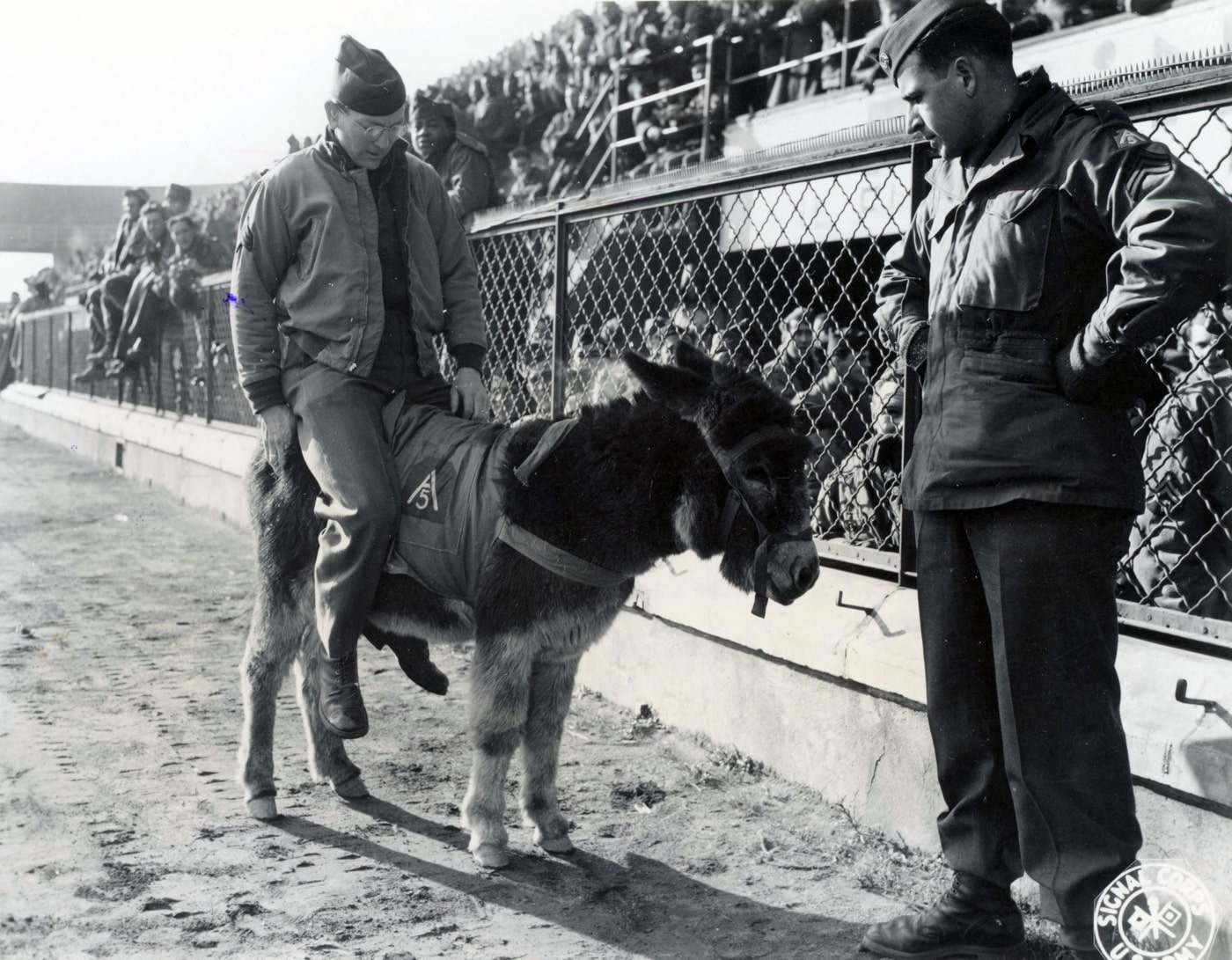
Teams were drawn up from the deep football assets of the 5th Army (the “Krautclouters”) and the 12th Air Force (the “Bridgebusters”), with proper uniforms provided. The Army team was coached by Lou Bush, who had starred for the University of Massachusetts, while the 12th Air Force was led by George “Sparky” Miller, who had played and coached at Indiana University. Both rosters were full of experienced players, many from major colleges and a handful with pro experience.
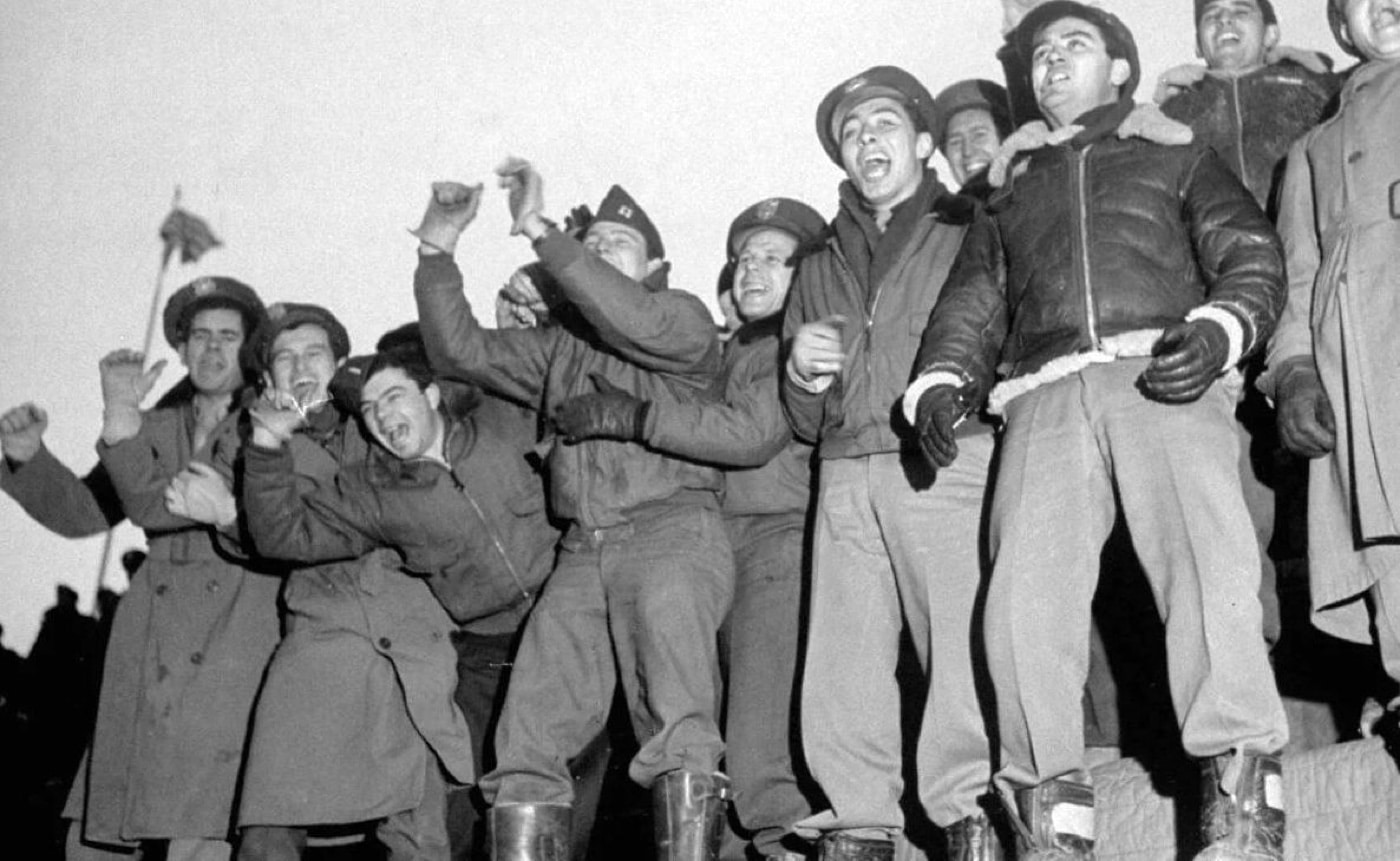
Captain for the Army team was former Philadelphia Eagles tackle Cecil Sturgeon. Ultimately, the star of the Spaghetti Bowl had pro football experience, but not in the NFL. John “Big Six” Moody had been an All-American at Morris Brown College, and had played professional football as recently as 1943. Moody played for the Los Angeles Bulldogs in the highly-regarded Pacific Coast Football League (1940-1948) — which featured black players while the NFL was segregated until 1946.
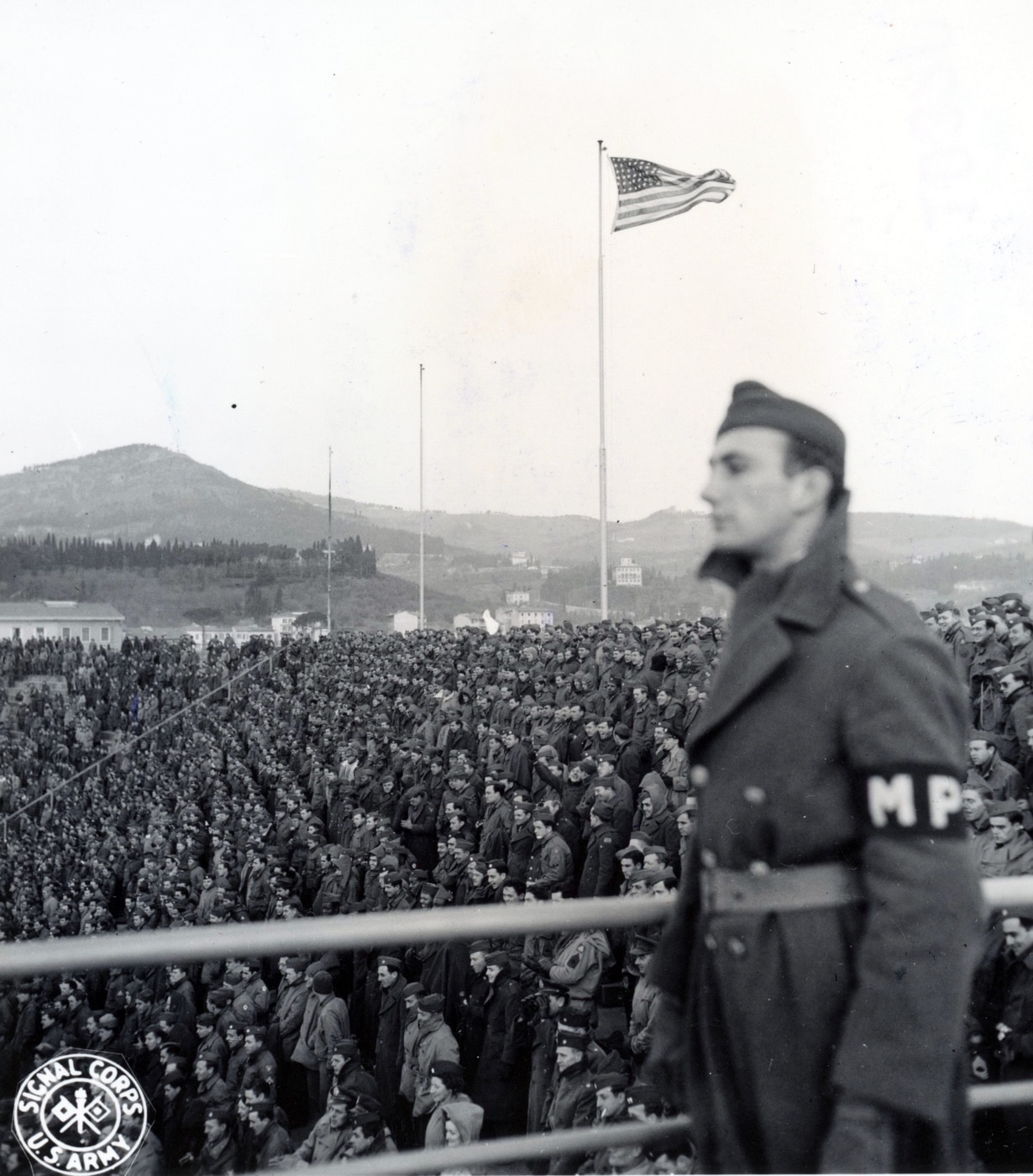
Moody, a 230-lb. fullback/linebacker was a powerful force throughout the game — scoring two touchdowns (one rushing, one on a long interception return) and kicked two extra points to lead the 5th Army in their 20-0 victory. A New York Times account of the game described Corporal Moody (of the 92nd Infantry Division) as a “one-man army”. After the war, Moody played for a short time with the Montreal Alouettes of the Canadian Football League. In 2022, he was inducted into the Black College Football Hall of Fame.
Conclusion
For the more than 25,000 U.S. troops in attendance (plus a few interested locals), the Spaghetti Bowl delivered everything one would expect from a stateside bowl game: there were two bands, several military vehicles were dressed up as parade floats (carrying cheerleaders and two bowl queens), Broadway performer Ella Logan was on hand to sing, Brooklyn Dodgers’ manager Leo Durocher gave a speech at halftime, and lovely majorette Peggy Jean twirled her batons. Meanwhile, the USO was on hand to provide coffee and donuts. By any measure, the Spaghetti Bowl was a successful operation for the U.S. military.
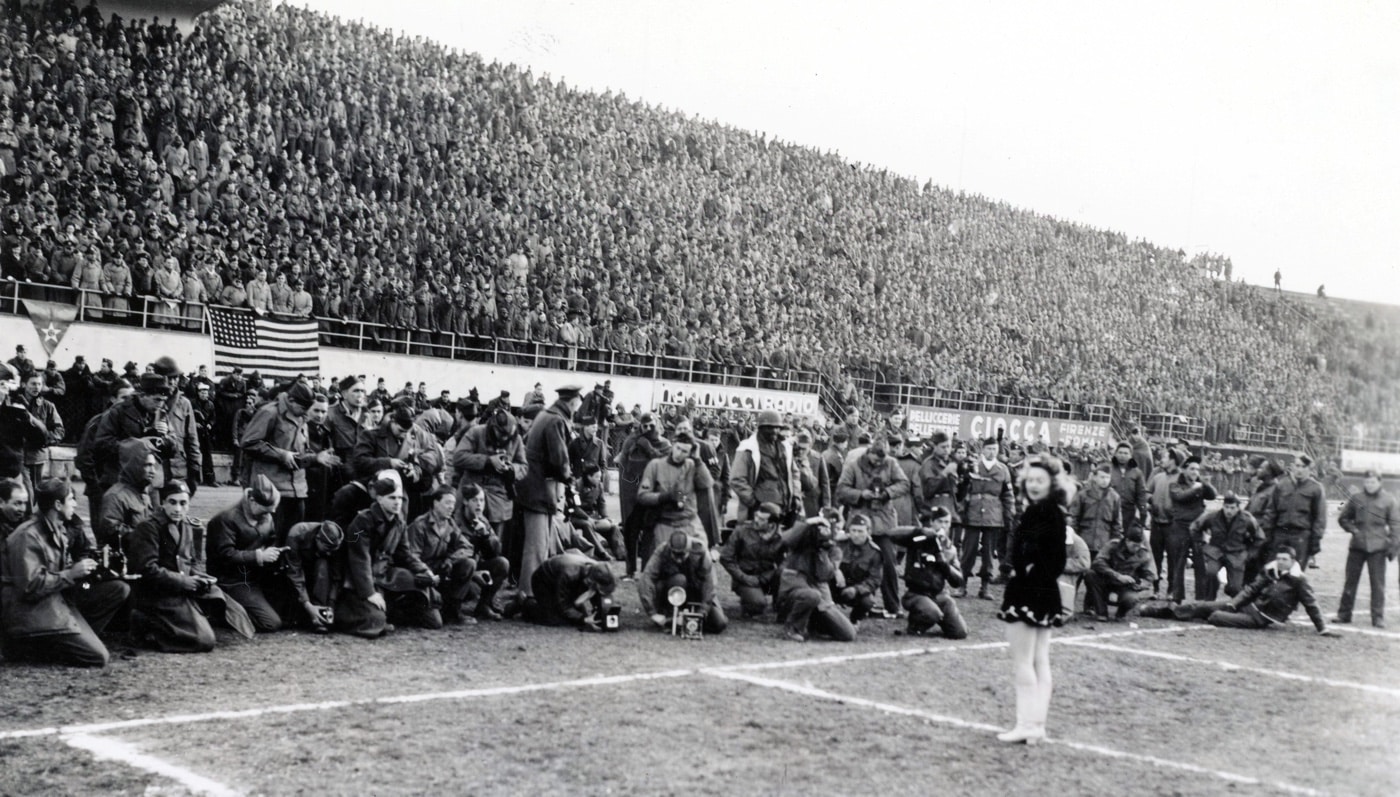
Five months later, five long and awful months, World War II in Europe would be over. G.I.s like John Moody would return home as winners, but their lives would be forever changed by the things they had seen and done. Football would continue to grow in popularity, reaching unprecedented levels of media exposure and fan interest with each passing decade. And for one afternoon, in the midst of a world war, in an ancient Italian city, a modern American gridiron tradition would play out to raise the morale of young men so far from home.
Editor’s Note: Be sure to check out The Armory Life Forum, where you can comment about our daily articles, as well as just talk guns and gear. Click the “Go To Forum Thread” link below to jump in!
Join the Discussion
Continue Reading
Did you enjoy this article?

 397
397








